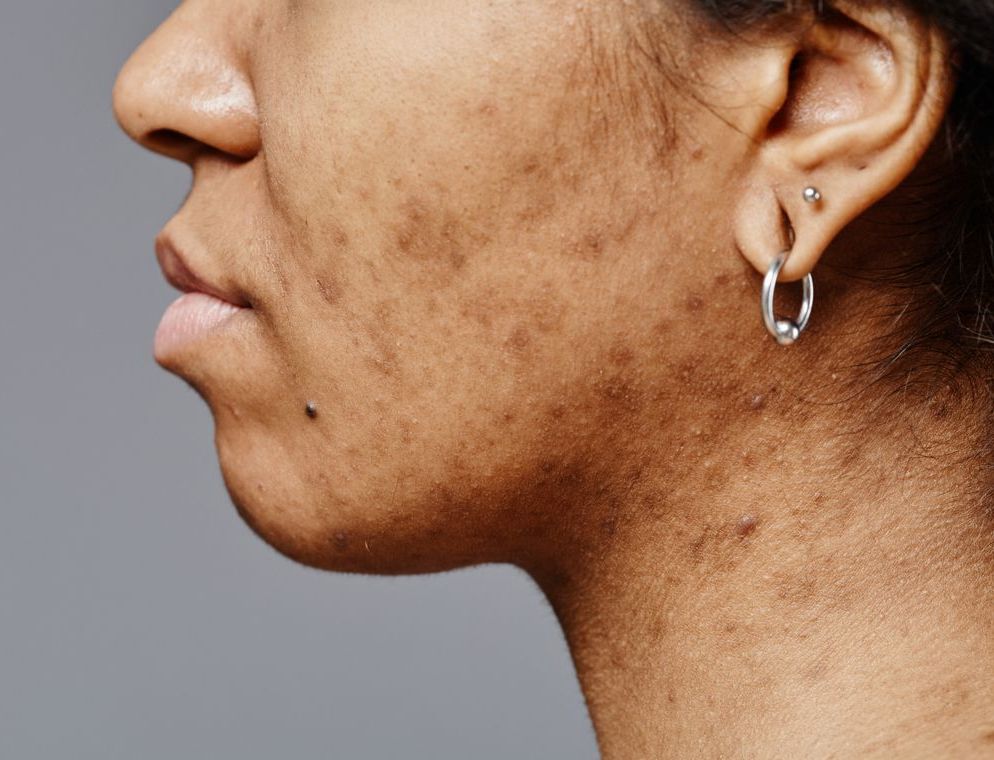Post-inflammatory hyperpigmentation (PIH) are dark marks that appear on your skin after acne or skin trauma. These spots are caused by left over inflammation, which leads to extra pigment in the skin. PIH is more common in people with darker skin tones and can take a long time to fade, sometimes lasting for years if untreated. While the spots aren't permanent, Dermatologists often combine treatments, such as topical creams alongside laser therapy, to achieve the best results. Regular follow-ups ensure safe and effective progress.
Post-inflammatory hyperpigmentation (PIH) occurs when skin inflammation, such as from acne, triggers an overproduction of melanin, the pigment responsible for skin colour. This results in dark spots or patches that can range from brown to gray, depending on skin type and the depth of pigmentation. Inflammation activates pigment-producing melanocytes, depositing excess melanin in the epidermis (surface layer) or dermis (deeper layer). UV exposure can worsen PIH by stimulating further melanin production. While PIH often fades over time, laser therapy can help accelerate the process and restore an even skin tone.

(Available on Excel V and Excel V Plus)
Best for
Mild cases or isolated vessels.
How It Works
The long-pulse Nd:YAG laser emits energy at a wavelength absorbed by haemoglobin in blood vessels. This heat causes the targeted vessels to collapse, effectively treating both surface red veins and deeper blue veins.
Results
Treated vessels may disappear immediately or gradually fade over several weeks.
(Candela VBeam Perfecta, Excel V, Excel V Plus, Sciton BBL)
Best for
More severe cases or large areas of visible facial veins and redness, particularly in rosacea.
How It Works
This approach layers multiple vascular-targeting technologies in one session, including:
Results
Effectively reduces visible veins, diffuse redness, and facial flushing commonly seen in rosacea.
(Candela VBeam Perfecta, Excel V, Excel V Plus, Sciton BBL)
Best for
Stimulating collagen and vascular remodelling to reduce persistent skin redness.
How It Works
Often recommended in combination with vascular laser or BBL treatments to enhance skin healing, texture, and redness reduction.

The picosecond lasers use ultra-short pulses of energy to target and break down excess pigment in the skin. It stimulates the body’s natural healing process, clearing dark spots caused by post-inflammatory hyperpigmentation without damaging the surrounding skin. it is highly effective for treating PIH. It improves skin tone and texture with minimal risk of side effects, even on darker skin tones.

Most patients require 3–5 sessions spaced 2–4 weeks apart. However, the number of treatments depends on the severity of the pigmentation and your skin's response to the laser.

There is minimal to no downtime with PicoWay laser treatments. You may experience mild redness or swelling immediately after the session, but this typically resolves within a day or two.